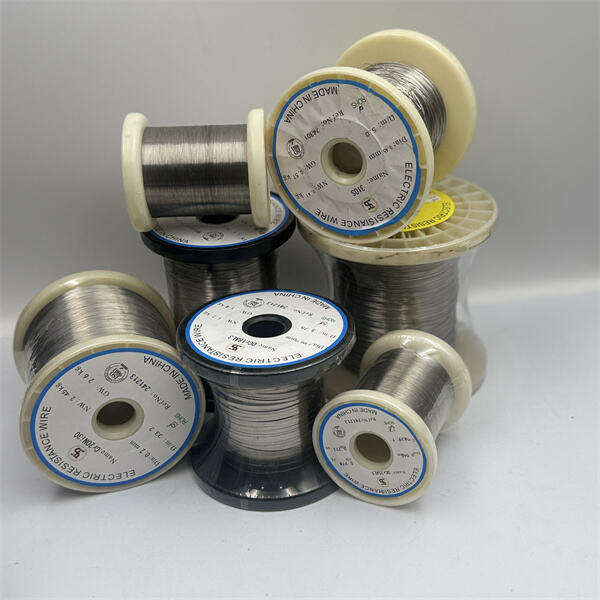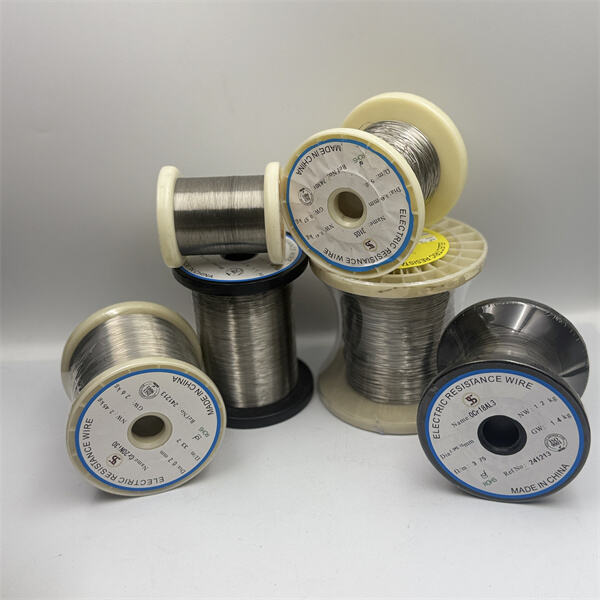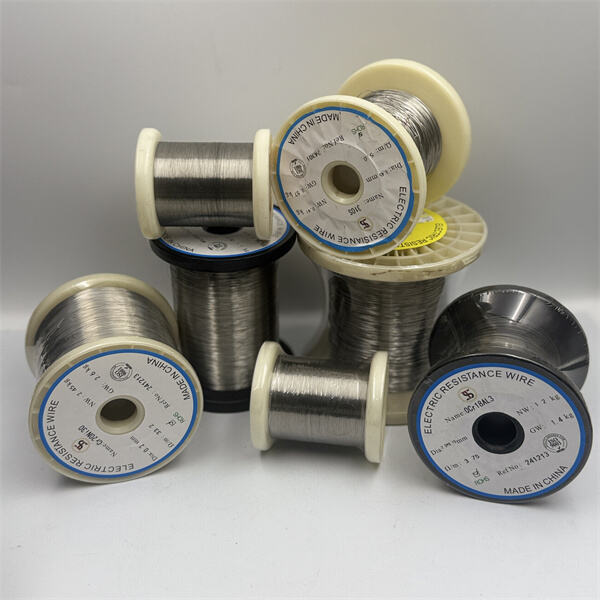Make wires connecting the world.
Hello, young readers. In this article, we will examine a very interesting subject, which is the "resistance of the wire". For example, have you ever noticed that when you try to use a long piece of wire to pass electricity, it doesn't work as well as you would when you use a short piece? This is due to the fact that how long the wire is can affect how much resistance it has to electrical current.
Resistance is a special word that tells you how much something is doing to slow down or stop electricity from moving. You might think of resistance as a kind of wall, something that keeps electricity from moving down the path of a Resistance Wire easily. Long wires by TS Heating Alloy usually have more resistance than short ones, meaning they impede the flow of electricity more. It is like running down a long corridor with a lot of big obstacles. A short, open corridor would be so much easier to sprint through.
For example, let’s say we have a wire that we know has a 5-voltage V and 2-ampere current. Then all we have to do is get one by the other. So, 5 volts divided by 2 amperes is the same as 2.5 ohms. This means that the wire is relatively resistant, which allows the electricity to flow easier compared to a more resistant wire. What can affect wire length of wire and resistance?
Not all wires are the same, and there are many variables that can influence wire resistance. The first and one of the most important is the thickness of the wire. This is due to the fact that the thicker wire presents less resistance to the electricity that flows through it. The reason for this is simple – thick wires have more room for the electricity to pass. It is like with the thick roads and a thin path, the thick roads can fit more cars at once, just like the thick wire can pass more electricity. The second factor of most prominence is the temperature of the wire. Warm wires are more resistant than cool wires because the heat makes the atoms of the wire shake and move more. This vibration blocks the flow of electricity and makes it harder to pass. In the end, it is like with the running, it is more difficult to run on the heated road than on the cold one. Thirdly, different materials have different resistors. Some materials, such as copper and aluminum, allow the electricity to pass well. These materials are called conductors. Other materials such as rubber and plastic let electricity barely through them. These are the insulators, and the insulators are primarily used in order to prevent the leakage of electricity.

Wire resistance by TS Heating Alloy is an essential factor, when designing electrical circuits. Too much high resistance wire in a wire can create problems in the circuit, or even cause the circuit to stop working! It is for this reason that engineers select the proper thickness of wire, also known as wire gauge.

So let’s get some basics: Wire gauge refers to the thickness of a wire. The greater the gauge number, the thinner the wire. Thicker wires by TS Heating Alloy offer less resistance so they are better for high-power circuits. Easier Option: For circuit running a big machine you would want to go with thick wire to ensure flow of electricity smoothly. Thinner wires, however, have more resistance, and thus are preferable for low power circuits, such as simple light bulbs.

Replace the short wire with the long wire. And when you hook up the long wire, you'll see the lightbulb dim. The long wire would have a greater resistance and therefore would be more difficult for the electricity to transmit through.
Located in Taizhou, Jiangsu, China, TS Heating Alloy Materials Co., Ltd benefits from its proximity to Shanghai Port, one of the world's busiest shipping hubs. This strategic location facilitates efficient international shipping, allowing us to offer timely delivery to markets across Asia, Europe, North America, and Africa. Our logistics capabilities ensure that we can meet global demand quickly and reliably, making us an ideal partner for companies looking for high-quality alloy wire products with fast turnaround times.
With dozens of material types available, TS Heating Alloy Materials Co., Ltd offers a broad selection of resistance wire and steel wire rope products. This variety ensures that we meet the specific needs of diverse industries, from construction to specialized sectors requiring resistance wire ropes. Our ability to supply both standard and custom-made solutions makes us a one-stop shop for businesses worldwide, providing versatility and flexibility to cater to various market demands.
TS Heating Alloy Materials Co., Ltd is equipped with cutting-edge technology, including wire drawing machines, annealing furnaces, and packing machines. This ensures that every product, from raw materials to finished items, meets stringent quality standards. The company’s production processes are designed for precision and reliability, enabling the manufacturing of high-quality resistance wires and steel wire ropes. Whether it's Fe-Cr-Al or Ni-Cr wire, our products are crafted with care and expertise, ensuring optimal performance in various industrial applications.
Since its establishment in 2023, TS Heating Alloy Materials Co., Ltd has expanded its international footprint through strong trading partnerships. Our products are now successfully exported to regions such as Japan, South Korea, Southeast Asia, Europe, and Africa, with an emphasis on fostering long-term relationships. By continuing to develop the TS Heating Alloy brand globally, we aim to increase recognition and expand our presence in international markets, offering high-performance alloy materials to customers worldwide.These four points highlight TS Heating Alloy Materials Co., Ltd's strengths, showing its commitment to quality, customer service, and global expansion.